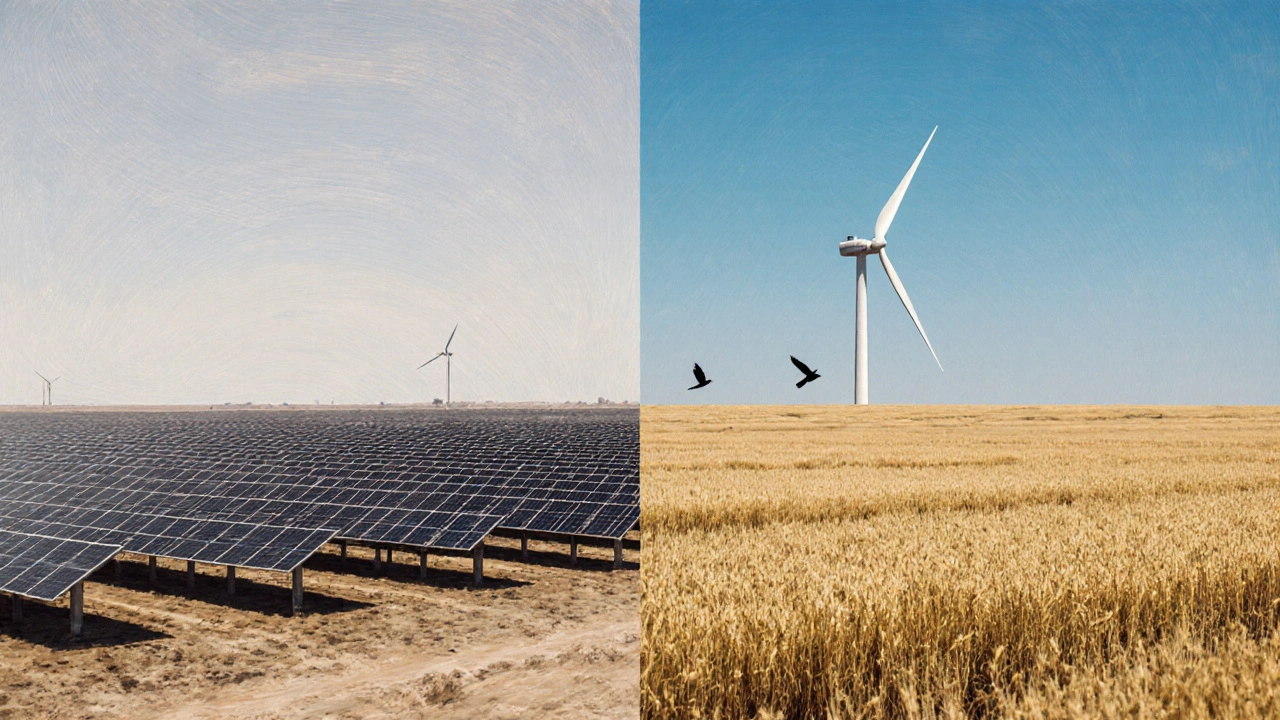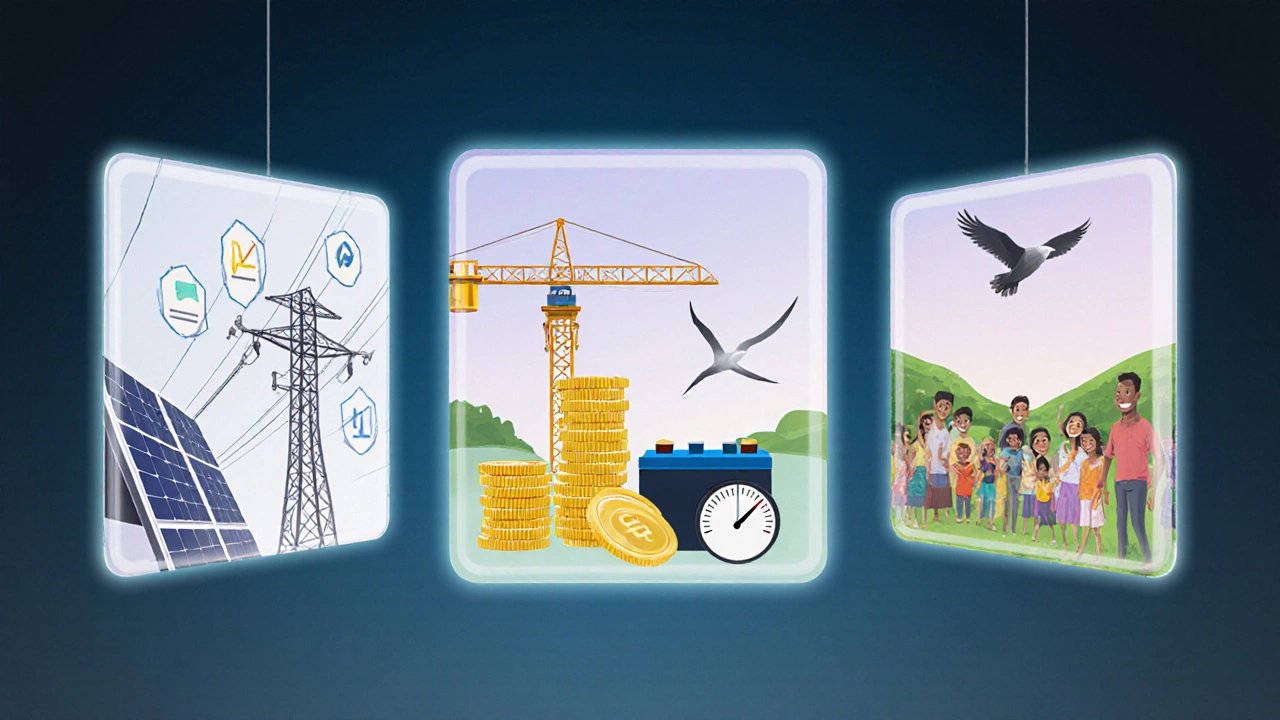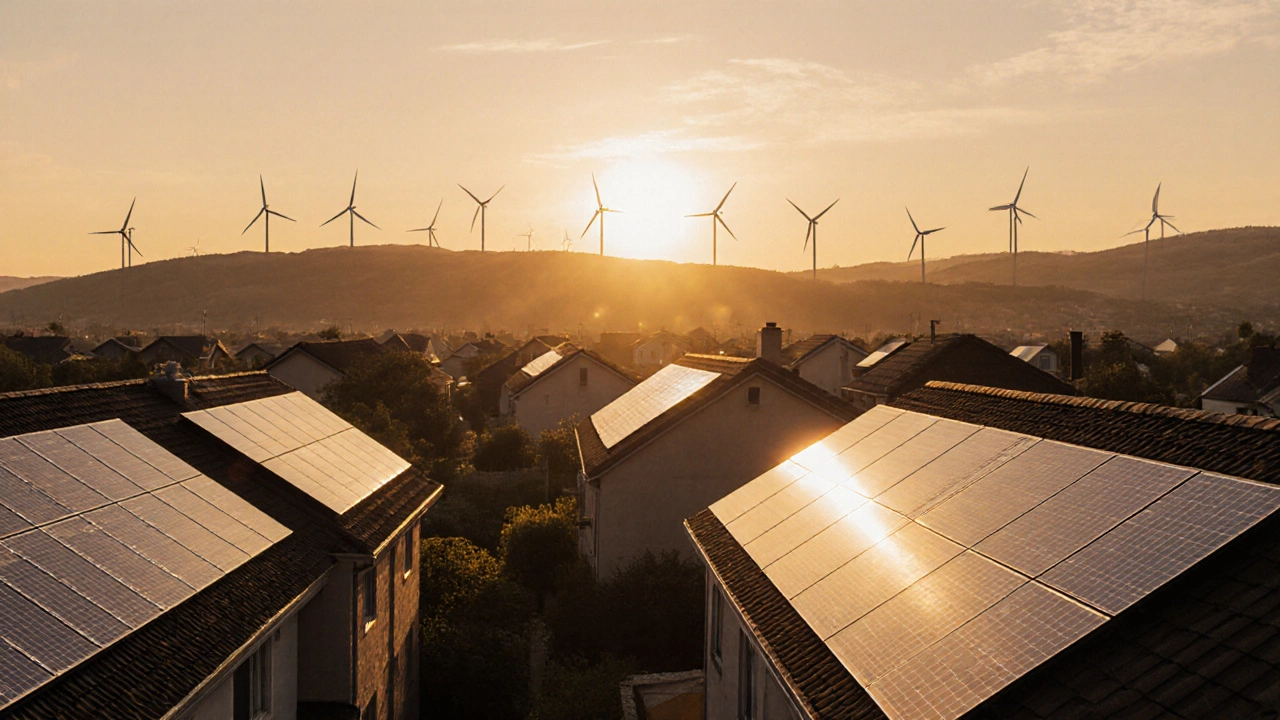Renewable Energy Cost Calculator
Project Cost Estimator
Calculate upfront costs for renewable energy projects based on current market data. Inputs reflect data from the article's 'High upfront costs and economic challenges' section.
Note: These are estimates only. Actual costs vary by location, project complexity, and market conditions. This tool helps you understand the scale of investment required for renewable energy projects.
When the world talks about clean power, the conversation often jumps straight to solar panels glittering on rooftops or wind turbines dancing on the horizon. That optimism is justified, but every technology has its flip side. Understanding the renewable energy disadvantages helps policymakers, investors, and everyday citizens make balanced decisions that avoid costly surprises down the road.
What exactly is renewable energy?
Renewable Energy is energy generated from naturally replenishing resources such as sunlight, wind, rain, tides, and geothermal heat. Unlike fossil fuels, which deplete over time, these sources can theoretically supply power indefinitely. However, the very characteristics that make them sustainable also create practical hurdles.
Intermittency - the reliability problem
Solar and wind output depends on weather, time of day, and season. This variability, known as Intermittency, forces grid operators to keep backup generators or large-scale storage on standby. In regions with high solar penetration, midday peaks can overload local distribution lines, while nighttime demand must be met by fossil‑fuel plants or costly batteries.
Key points:
- Capacity factors for solar average 15‑25% and wind 25‑40%, meaning the installed capacity rarely runs at full power.
- Peak‑shaving solutions require substantial Energy Storage capacity, which adds both capital expense and operational complexity.
- Grid stability standards in many countries still assume a steady‑state supply, making large‑scale renewable integration a regulatory challenge.
Land use and ecological footprints
Deploying solar farms, wind farms, and bio‑energy plantations consumes large tracts of land. Land Use concerns include habitat fragmentation, displacement of agriculture, and visual impacts on landscapes.
Examples:
- In India’s Rajasthan, a 1 GW solar park occupies roughly 4,000 hectares, a space that could otherwise support drought‑resilient crops.
- Wind farms in the UK’s coastal zones have been linked to bird mortality rates up to 4.5% of local avian populations.
- Large‑scale biomass plantations may lead to monocultures, reducing biodiversity and soil health.

High upfront costs and economic challenges
Renewable projects demand significant capital before any electricity is generated. While operating costs are low, the Cost Premium can deter investors, especially in emerging markets where financing rates are high.
Financial realities:
- The levelized cost of electricity (LCOE) for utility‑scale solar dropped to $0.03/kWh in 2024, yet the initial investment remains about $1,200 per kW installed.
- Off‑grid wind projects in Sub‑Saharan Africa often require $1,500-$2,000 per kW, a barrier for rural cooperatives.
- Energy storage adds roughly $150-$200 per kWh of usable capacity, inflating the total project cost by 30-50%.
Resource and material constraints
Manufacturing solar panels, wind turbines, and batteries relies on rare‑earth elements and metals such as lithium, cobalt, indium, and neodymium. Mining these materials creates geopolitical dependencies and environmental concerns.
Key statistics:
- China supplies over 80% of global rare‑earth output, giving it leverage over the renewable supply chain.
- By 2030, the International Energy Agency projects a 30% shortfall in cobalt supply relative to demand for electric‑vehicle‑grade batteries.
- Recycling rates for photovoltaic modules hover around 15%, meaning most end‑of‑life panels become waste.
Lifecycle emissions - not always zero
While operational emissions for renewables are near‑zero, manufacturing, transport, and decommissioning generate greenhouse gases. The Lifecycle Emissions for solar PV average 40-60g CO₂‑eq/kWh, comparable to natural‑gas plants in some regions.
Case study: The construction of a 500MW onshore wind farm in Texas emitted roughly 10,000t CO₂, equivalent to the annual emissions of 2,200 U.S. households.

Policy and market barriers
Renewable deployment depends heavily on subsidies, tax credits, and renewable portfolio standards. When Policy Incentives expire or are reduced, project economics can collapse overnight.
Real‑world examples:
- The U.S. Production Tax Credit (PTC) for wind lapsed in 2023, delaying several 2‑GW projects.
- India’s solar auction scheme shifted from a fixed‑price model to a competitive bidding system, causing a temporary dip in auction prices but also creating uncertainty for developers.
Comparing the main renewable sources and their biggest drawbacks
| Technology | Primary Disadvantage | Typical Mitigation |
|---|---|---|
| Solar Power | Intermittent generation, large land footprint | Distributed rooftop installations, agrivoltaics |
| Wind Power | Visual/auditory impact, wildlife collisions | Offshore sites, bird‑friendly turbine design |
| Hydropower | Ecological disruption, high upfront cost | Run‑of‑river schemes, fish ladders |
| Biomass | Land competition, emissions from combustion | Using waste residues, advanced gasification |
| Geothermal | Site specific, drilling risks | Enhanced geothermal systems, thorough site surveys |
Bottom line - weighing the cons against the pros
Renewables are essential for decarbonization, but ignoring their downsides can lead to stranded assets, community opposition, or unintended environmental harm. Decision‑makers should evaluate each technology against three practical lenses:
- Technical fit: Does the local climate, grid capacity, and land availability support the technology?
- Economic viability: Are financing terms, storage needs, and material supply chains affordable?
- Social & environmental impact: Will the project face resistance due to visual, ecological, or cultural concerns?
When those questions get honest answers, renewable projects are far more likely to deliver clean power without hidden costs.
Frequently Asked Questions
Why do solar panels need a lot of land?
Solar panels generate electricity per unit area based on the amount of sunlight they receive. To produce megawatts of power, utilities must cover dozens of hectares, especially in low‑insolation regions. Agrivoltaic designs-where crops grow beneath panels-can reuse the space and improve overall land productivity.
Can energy storage fully solve the intermittency issue?
Battery systems can smooth short‑term fluctuations, but they are expensive for multi‑day or seasonal storage. Emerging technologies like pumped hydro, compressed air, and hydrogen can complement batteries, yet each brings its own set of constraints.
Do wind turbines harm birds?
Early turbine designs caused noticeable bird mortality, especially near migration corridors. Modern siting studies, radar detection, and feather‑friendly blade coatings have reduced fatalities by up to 70% in many jurisdictions.
What’s the biggest material bottleneck for renewables?
Lithium and cobalt for batteries, and neodymium for high‑strength permanent magnets in wind turbines, are the most cited constraints. Recycling initiatives and the shift to cobalt‑free chemistries are essential to ease future shortages.
How do policy changes affect renewable projects?
Subsidy cuts or the withdrawal of tax credits can instantly raise the cost of new builds, leading to project delays or cancellations. Stable, long‑term policy frameworks are therefore a cornerstone for attracting private capital.




